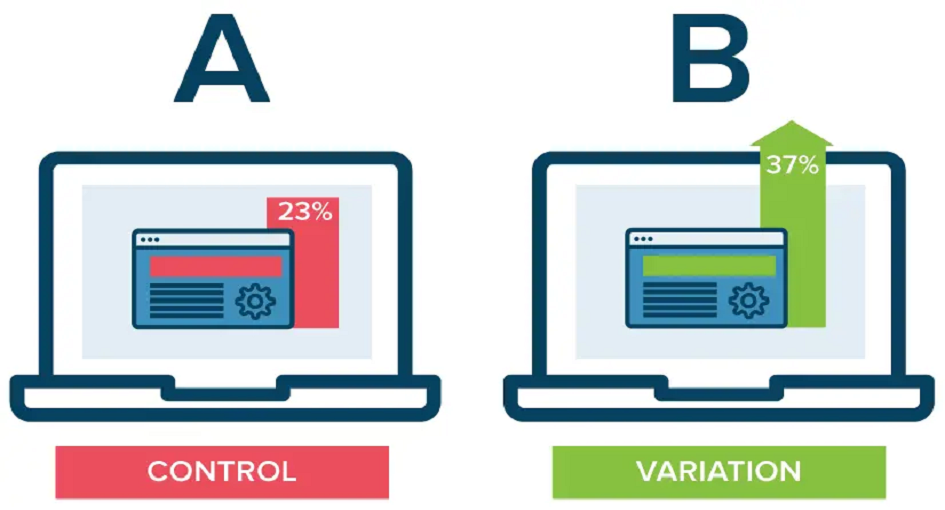
In the fiercely competitive world of Amazon selling, staying ahead of the game requires constant adaptation and optimization. A/B testing is a powerful tool in your arsenal, allowing you to fine-tune your product listings, ads, and strategies for maximum profitability. This detailed and unique article explores the ins and outs of A/B testing on Amazon, helping you unlock the potential for increased profits and success on the world’s largest e-commerce platform.
Before diving into the specifics of Amazon A and B testing, it’s crucial to grasp the concept. A and B testing involves comparing two versions (A and B) of a webpage, listing, or ad to determine which one performs better in terms of user engagement, conversion rates, and ultimately, profitability.
Amazon’s vast marketplace is home to millions of sellers, making it essential to stand out. A and B testing can significantly impact your Amazon business by optimizing product listings, increasing click-through rates, and conversion rates, and boosting your overall sales.
Amazon offers various elements for A and B testing, including product titles, images, descriptions, pricing, bullet points, and even advertising campaigns. Each of these can influence a buyer’s decision, making them ideal candidates for optimization.
Before conducting an A/B test, define your objectives. Are you aiming to increase click-through rates, conversion rates, or average order value? Having clear goals will guide your testing strategy.
Several third-party tools and Amazon’s own advertising platform provide A and B testing capabilities. Explore options like Splitly, Helium 10, or Amazon A and B testing for Sellers to streamline your testing process.
Your product title is the first thing shoppers see. Experiment with different formats, and keywords, and lengths to find the most compelling title that resonates with your target audience.
High-quality images are crucial for conversions. Test variations of your product images, such as different angles, lifestyle shots, or infographics, to see which resonates best with your audience.
Optimize your product descriptions by testing different formats, lengths, and persuasive copywriting techniques. Highlight key benefits and features that resonate with potential buyers.
A and B testing pricing strategies can reveal the optimal price point for your product. Experiment with different price ranges, discounts, or bundle offers to find the sweet spot that maximizes profits.
Bullet points provide quick, scannable information. Test variations of bullet points to highlight different product features, benefits, or value propositions.
If you run Amazon PPC (Pay-Per-Click) campaigns, A and B testing can help you optimize ad copy, keywords, bidding strategies, and targeting options to improve ROI.
Follow best practices for implementing A/B tests, such as conducting tests on a single variable at a time, segmenting your audience, and ensuring statistical significance.
After running A/B tests, analyze the results meticulously. Look for statistically significant improvements in metrics like click-through rates, conversion rates, and overall sales.
Once you identify winning variations through A and B testing, implement them across your product listings and advertising campaigns to maximize profitability.
A and B testing should be an ongoing process. Continuously monitor your Amazon listings and campaigns, and be prepared to adapt to changing market dynamics.
Be cautious of over-testing, relying on inconclusive data, or neglecting the impact of external factors. Carefully design your tests to avoid these pitfalls.
While data-driven decisions are crucial, don’t disregard your intuition and industry expertise. A successful Amazon seller combines both elements for the best results.
Ensure that your A and B testing practices comply with Amazon’s policies and guidelines to avoid potential account issues.
Customer reviews and feedback can provide valuable insights for A and B testing. Pay attention to customer comments and incorporate their suggestions when relevant.
Stay informed about Amazon’s ever-changing algorithms, features, and marketplace dynamics to adapt your A and B testing strategies accordingly.
In conclusion, A/B testing is a potent weapon in your arsenal for Amazon success. By fine-tuning your product listings, ad campaigns, and pricing strategies through systematic testing, you can optimize your profitability and stand out in the competitive Amazon marketplace. As you embark on your A and B testing journey, remember that continuous improvement and adaptation are key to long-term success in the world of Amazon selling.